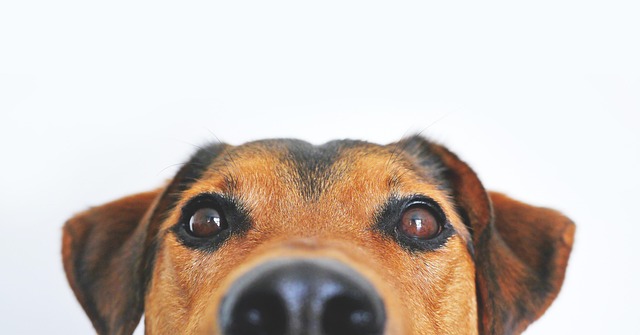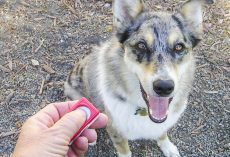As much joy as dogs bring into our lives — and wow, do they bring a lot — they also come with a handful of “wait… why are you doing that?” moments. Even the best dogs have habits that can leave us confused, frustrated or just plain exhausted.
The good news? Most problem behaviors can be improved (or completely fixed!) with patience, consistency and a few smart dog training techniques.
Let’s jump right in — without actually jumping, of course:
1. Constant Barking
The secret to stopping nonstop barking is figuring out why it’s happening. Barking is communication, and dogs usually fall into one of these categories:
- Alert barking
- Attention-seeking barking
- Frustration barking
- Excited/play barking
- Territorial barking
Pay attention to when and where it happens — the “why” guides the solution.
First line of defense: exercise
A bored, under-stimulated dog is more likely to bark. A tired, fulfilled dog is much quieter. Prioritize both physical activity and mental enrichment.
If your dog is barking for attention
Ignore it completely. Turn away, leave the room, or avoid eye contact. When he finally stops, calmly say “yes” and redirect him to something better — a cue, a toy or a task.
Consistency is everything. If your dog sometimes gets what he wants by barking, he’ll keep trying.
For alert or territorial barking
Watch for pre-bark signs (staring, stiffening, perked ears). Interrupt early with a distraction and reward silence.
2. Digging
Digging isn’t always a “bad” behavior — it’s often great stress relief and very natural for dogs.
If you want to channel the behavior
Give your dog an approved digging spot, such as a towel or blanket with hidden treats. Put the digging on cue so you control when and where it happens.
If the digging is destructive
Interrupt the behavior gently and redirect your dog to something appropriate. Reward him for choosing an alternative activity.
3. Begging
Those big “please share?” eyes are irresistible — which is exactly why begging becomes a problem.
The cure: ignore, ignore, ignore
Begging gets worse before it gets better, so don’t give in. Don’t talk to your dog, don’t look at him and absolutely do NOT offer food from the table.
To prevent begging entirely
- Never feed from your plate
- Teach “place” so your dog has a designated spot during meals
- Offer a bone or puzzle toy at dinnertime
Consistency now saves you endless guilt trips later — especially during the holidays.
4. Chewing
Chewing is normal — especially for puppies who are teething. But it’s still frustrating when shoes and furniture turn into chew toys.
For puppies
Expect chewing and provide tons of appropriate toys. Reward your pup for choosing them.
For older dogs
Chewing isn’t spiteful or jealous — it’s usually boredom, stress or loneliness.
Increase both mental and physical stimulation and keep plenty of chew options available.
To protect your home
Until your dog is trustworthy, limit unsupervised freedom. Use a crate or gated area where he can relax safely without getting into trouble.
5. Jumping
Jumping feels cute when your dog is tiny — until that tiny puppy becomes a 60-pound bowling ball.
The problem usually starts with mixed signals: sometimes we greet jumping with affection, other times we punish it. Inconsistency makes the behavior stick.
To fix jumping
- Turn your back or step away the moment paws leave the floor
- Ask for an alternate behavior (like “sit”)
- Reward only when your dog greets you calmly
Everyone in the household — and any frequent visitors — must follow the same rules.
6. Separation Anxiety
Separation anxiety is heartbreaking and stressful — but it can be improved.
Start by tiring your dog out
A walk or play session before you leave helps reduce pent-up energy.
Build positive associations with alone time
Give a high-value puzzle toy or long-lasting treat only when you leave. Pick up whatever’s left when you return.
Stay calm when you come home
Ignore your dog for the first five minutes. Greet him only when he’s calm, and keep your energy soft and relaxed.
If the anxiety is severe, a professional trainer or behaviorist can create a personalized plan.
You’ve Got This — And So Does Your Dog
Every dog parent faces these challenges at some point. With a bit of consistency, patience and positive reinforcement, even the most baffling habits can improve. And if you ever feel stuck, a certified behaviorist is always a great resource for extra guidance.
Your dog wants to do the right thing — sometimes he just needs a little help learning how.











